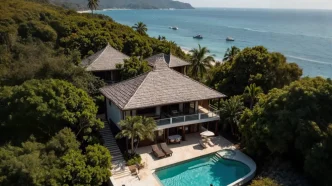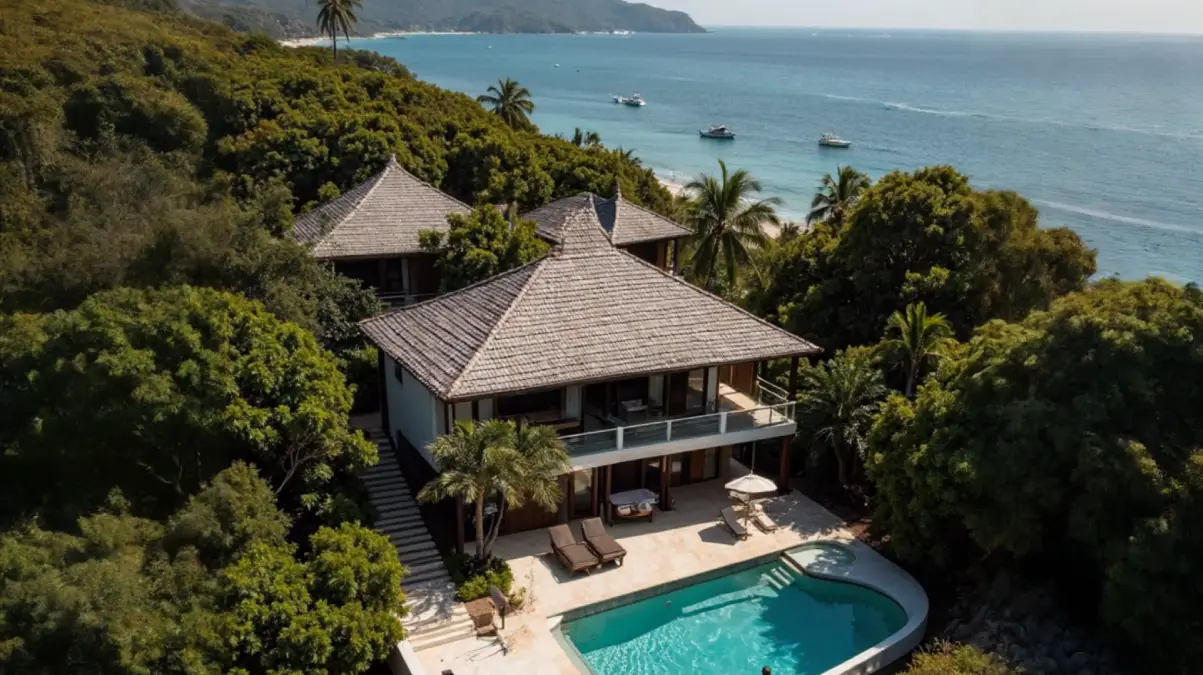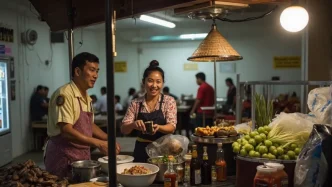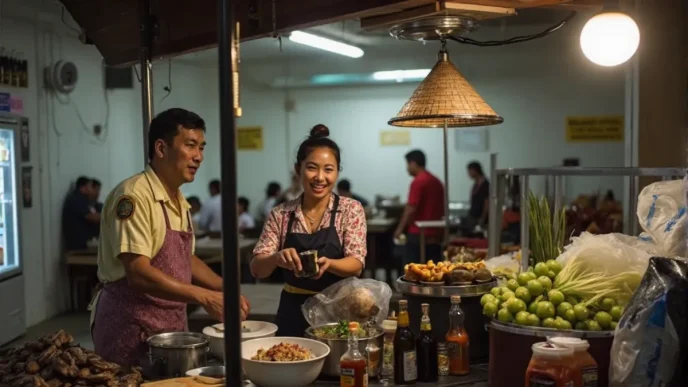In 2025, Koh Samui’s palm-fringed shores aren’t just a postcard paradise—they’re a magnet for investors chasing rental yields of 5–7% and property price growth of 4–6%, outstripping Thailand’s national average. As tourism rebounds and $1.5 billion in infrastructure projects enhance the island’s appeal, Koh Samui’s real estate market offers tantalizing prospects. Yet, savvy investors must tread carefully, balancing opportunity with regulatory hurdles and environmental concerns.
The Market’s Momentum
Koh Samui’s economy hums with tourism, welcoming 5.5 million visitors in 2023, with projections of 6 million in 2025, per Thailand’s Tourism Authority. This surge powers a robust rental market, particularly in Chaweng and Lamai. Condos, priced from $120,000 to $250,000, deliver 5–7% yields, while mid-tier villas in prime areas like Bophut, averaging $350,000–$374,500, can hit 8%. Luxury villas, fetching $5 million in exclusive enclaves, offer up to 9%. Limited land availability pushes prices up 4–6% annually, following an 8–12% jump in 2023. In Q1 2025, the market spans 320 projects with 28,000 units, valued at $5.2 billion (33.8 baht = 1 USD). A 13% unsold inventory rate, up from 10% in 2024, signals active development but cautions against oversupply in areas like Mae Nam.
“Samui’s charm lies in its balance of tranquility and growth,” says Anika Sørensen, a Koh Samui-based property consultant with 15 years of experience guiding foreign buyers. “The market in 2025 is like catching a gentle wave—steady but rewarding. Top developers here blend tropical aesthetics with global standards, setting Samui apart in Southeast Asia.”
Q1 2025 Market Snapshot
| Metric | Value |
|---|---|
| Total Projects | 320 |
| Total Units | 28,000 |
| Market Value (USD) | $5.2 billion |
| Average Condo Price (USD) | $120,000–$250,000 |
| Average Villa Price (USD) | $350,000–$5 million |
| Unsold Inventory | 13% (up from 10% in 2024) |
Infrastructure Fueling Growth
Thailand’s $1.5 billion investment in Koh Samui’s infrastructure from 2025–2027 underscores its rising status. The Samui International Airport upgrade, set for 2026, will boost capacity to 4 million passengers annually, driving rental demand. Road expansions, like the Ring Road (Route 4169), improve access to Bophut and Chaweng, potentially lifting property values by 8–12%. A proposed ferry terminal upgrade aims to streamline tourist arrivals, though local resistance highlights environmental worries.
Koh Samui Infrastructure Spending (2025–2027) – $1.5B USD
Investment Dynamics
From 2020 to 2025, $0.9 billion flowed into Koh Samui’s property sector: 65% ($0.585 billion) for residential projects, 25% ($0.225 billion) for hospitality, and 10% ($0.09 billion) for commercial developments. Foreign buyers, mainly from Europe, China, and Australia, drove 65% of 2023 residential purchases, focusing on condos and villas in Chaweng and Bophut. Hospitality projects, like boutique resorts, thrive on tourism, while commercial spaces, such as beachfront cafes, support local vibrancy.
Condo Prices in Koh Samui (2024–2025 & Max)
Villa Prices in Koh Samui (2024–2025 & Max)
House Prices in Koh Samui (2024–2025 & Max)
In Koh Samui, villas typically fetch higher prices than houses, reflecting their appeal as mid-tier retreats in prime areas like Bophut or Chaweng. These 3–4 bedroom properties, often featuring private pools and larger plots, attract holidaymakers and investors seeking rental income. Houses, generally 2–3 bedroom bungalows in quieter areas like Mae Nam or Lipa Noi, offer simpler designs and smaller plots, appealing to long-term residents. Strong foreign demand for villas, particularly from European and Asian buyers, drives their premium pricing, with villas averaging $2,800–$3,200 per square meter compared to $1,700–$1,900 for houses.
Luxury Villa Prices in Koh Samui (2024–2025 & Max)
In Koh Samui, villas typically fetch higher prices than houses, reflecting their appeal as mid-tier retreats in prime areas like Bophut or Chaweng. These 3–4 bedroom properties, often featuring private pools and larger plots, attract holidaymakers and investors seeking rental income. Houses, generally 2–3 bedroom bungalows in quieter areas like Mae Nam or Lipa Noi, offer simpler designs and smaller plots, appealing to long-term residents. Strong foreign demand for villas, particularly from European and Asian buyers, drives their premium pricing, with villas averaging $2,800–$3,200 per square meter compared to $1,700–$1,900 for houses.
These charts highlight the residential sector’s strength, fueled by foreign demand for Koh Samui’s condos and villas.
Why Koh Samui Stands Out
Koh Samui’s rental yields and price growth eclipse Thailand’s 3–4% average. Cash-based transactions insulate investors from global interest rate volatility, unlike European markets with 2.2% GDP growth in 2025. Foreign buyers, who accounted for 65% of 2023 purchases, leverage Thailand’s 49% condo ownership laws, while wellness retreats and international schools sustain expat demand.
Navigating Challenges and How to Ride the Wave
Koh Samui’s market sparkles, but pitfalls loom. The 13% unsold inventory rate in 2025, especially in Mae Nam, could soften prices if tourism falters. Reports of past scams on social media in 2024 underscore the need for rigorous due diligence. Investors should partner with reputable agents and legal experts, targeting areas like Bophut, where infrastructure fuels growth. Environmental pressures, including coastal erosion from overdevelopment, demand sustainable practices as eco-consciousness rises.
Koh Samui’s $5.2 billion property market, bolstered by $1.5 billion in infrastructure, is a gem in Thailand’s $57.87 billion real estate sector in 2025. “Choose developers with proven track records and stay ahead of regulatory shifts to secure strong returns,” advises Sørensen.
















